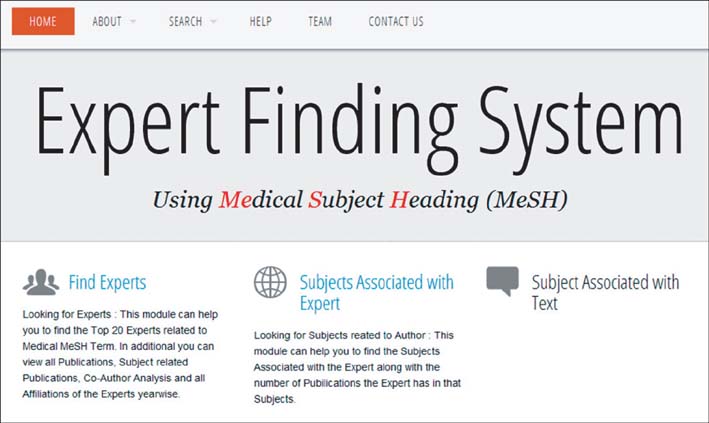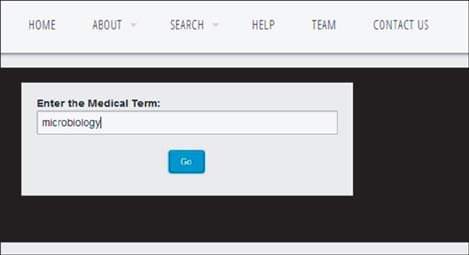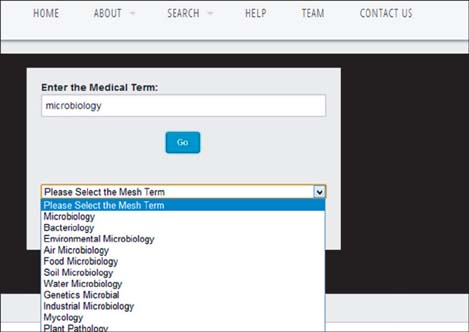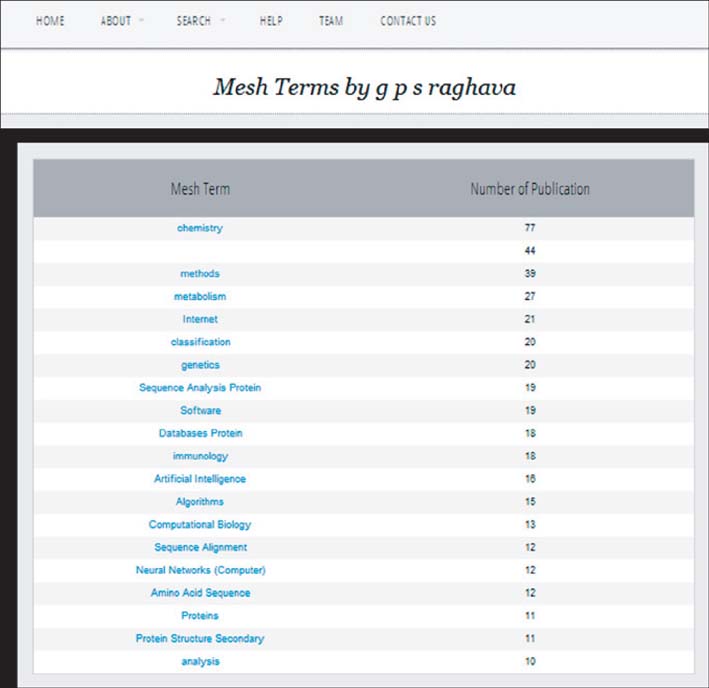Healthc Inform Res.
2013 Dec;19(4):243-249. 10.4258/hir.2013.19.4.243.
Developing a Biomedical Expert Finding System Using Medical Subject Headings
- Affiliations
-
- 1Bioinformatics Centre, Indian Council of Medical Research, Ansari Nagar, New Delhi, India. hsingh@bmi.icmr.org.in
- KMID: 2229499
- DOI: http://doi.org/10.4258/hir.2013.19.4.243
Abstract
OBJECTIVES
Efficient identification of subject experts or expert communities is vital for the growth of any organization. Most of the available expert finding systems are based on self-nomination, which can be biased, and are unable to rank experts. Thus, the objective of this work was to develop a robust and unbiased expert finding system which can quantitatively measure expertise.
METHODS
Medical Subject Headings (MeSH) is a controlled vocabulary developed by the National Library of Medicine (NLM) for indexing research publications, articles and books. Using the MeSH terms associated with peer-reviewed articles published from India and indexed in PubMed, we developed a Web-based program which can be used to identify subject experts and subjects associated with an expert.
RESULTS
We have extensively tested our system to identify experts from India in various subjects. The system provides a ranked list of experts where known experts rank at the top of the list. The system is general; since it uses information available with the PubMed, it can be implemented for any country.
CONCLUSIONS
The expert finding system is able to successfully identify subject experts in India. Our system is unique because it allows the quantification of subject expertise, thus enabling the ranking of experts. Our system is based on peer-reviewed information. Use of MeSH terms as subjects has standardized the subject terminology. The system matches requirements of an ideal expert finding system.
Keyword
MeSH Terms
Figure
Reference
-
1. Maybury MT. Expert finding systems. Bedford (MA): MITRE Center for Integrated Intelligence Systems;2006.2. Mimno D, McCallum A. Expertise modeling for matching papers with reviewers. In : Proceedings of the 13th ACM SIGKDD International Conference on Knowledge Discovery and Data Mining; 2007 Aug 12-15; San Jose, CA. p. 500–509.3. Yimam-Seid D, Kobsa A. Expert-finding systems for organizations: problem and domain analysis and the DEMOIR approach. J Organ Comput Electron Commer. 2003; 13(1):1–24.
Article4. Liu X, Croft WB, Koll M. Finding experts in community-based question-answering services. In : Proceedings of the 14th ACM International Conference on Information and Knowledge Management; 2005 Oct 31-Nov 5; Bremen, Germany. p. 315–316.5. Serdyukov P, Hiemstra D. Modeling documents as mixtures of persons for expert finding. Advances in information retrieval. Heidelberg, Germany: Springer;2008. p. 309–320.6. Tang J, Zhang J, Yao L, Li J, Zhang L, Su Z. ArnetMiner: extraction and mining of academic social networks. In : Proceedings of the 14th ACM SIGKDD International Conference on Knowledge Discovery and Data Mining; 2008 Aug 24-27; Las Vegas, NV. p. 990–998.7. Wu CJ, Chung JM, Lu CY, Lee HM, Ho JM. Using Webmining for academic measurement and scholar recommendation in expert finding system. In : Proceedings of the IEEE/WCI/ACM International Conference on Web Intelligence and Intelligent Agent Technology; 2011 Aug 22-27; Lyon, France. p. 288–291.8. Krulwich B, Burkey C, Consulting A. The ContactFinder agent: answering bulletin board questions with referrals. In : Proceedings of the 13th National Conference on Artificial Intelligence; 1996 Aug 4-8; Portland, OR. p. 10–15.9. Campbell CS, Maglio PP, Cozzi A, Dom B. Expertise identification using email communications. In : Proceedings of the 12th International Conference on Information and Knowledge Management; 2003 Nov 2-8; New Orleans, LA. p. 528–531.10. Vivacqua AS. Agents for expertise location. In : Proceedings of the AAAI Spring Symposium Workshop on Intelligent Agents in Cyberspace; 1999 Mar 22-24; Palo Alto, CA. p. 9–13.11. Lipscomb CE. Medical subject headings (MeSH). Bull Med Libr Assoc. 2000; 88(3):265–266.12. Trieschnigg D, Pezik P, Lee V, de Jong F, Kraaij W, Rebholz-Schuhmann D. MeSH Up: effective MeSH text classification for improved document retrieval. Bioinformatics. 2009; 25(11):1412–1418.
Article
- Full Text Links
- Actions
-
Cited
- CITED
-
- Close
- Share
- Similar articles
-
- Promotion to MEDLINE, indexing with Medical Subject Headings, and open data policy for the Journal of Educational Evaluation for Health Professions
- open-japanese-mesh: assigning MeSH UIDs to Japanese medical terms via open Japanese-English glossaries
- Resources for assigning MeSH IDs to Japanese medical terms
- The Equality of Key Words of the Journal of Korean Dental Society of Anesthesiology with Medical Subject Headings (MeSH) (2001-2014)
- History and Trends of "Personal Health Record" Research in PubMed







